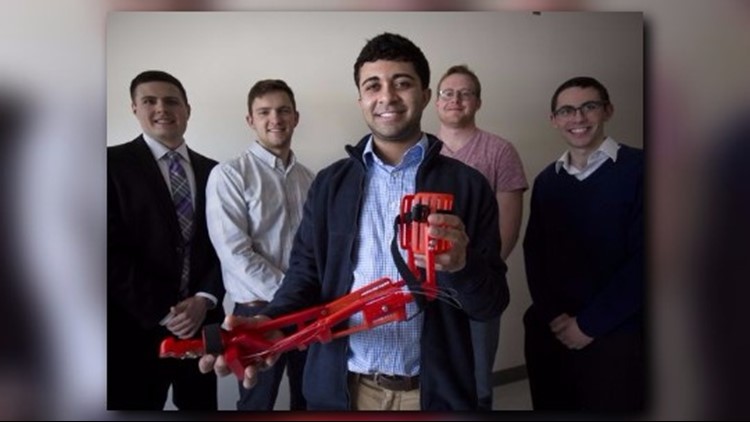College and high school students in Ohio are using 3-D printing to solve medical problems in the community.
A group of biomedical engineering students at the University of Cincinnati started a student organization in 2015 to build inexpensive prosthetic hands for local kids.
Inspired by the global organization e-Nable, Enable UC can build a custom, functional hand in its lab on campus for less than $20 and get it to the patient in about a week. Pediatric patients aren't charged a penny and are able to shake someone’s hand, catch a football or ride a bike with two hands.
These devices aren't meant to replace prostheses developed in collaboration with a medical professional. They're designed to be affordable and accessible tools for kids. The artificial hands are made out of plastic and don't use electrical sensors or robotics. Making them this way reduces the cost of supplying multiple prostheses when kids grow out of them and can be easily replaced if they break.
So far, in the group's less than two years of existence, students have built 42 prosthetic hands and assistive devices. And they want to do more.
"This is empowering students to have a direct impact in the life of someone with a disability," said Jacob Knorr, a 22-year-old biomedical engineering student and president of Enable UC.
The first person to receive a hand from Enable UC was a 13-year-old boy named Brody who was born with a partial right hand. It was hard for Brody to steer a bike, throw a ball or hold a lacrosse stick because of his disability, according to the university. Enable UC made a hand that looked like a Star Wars Stormtrooper for Brody, a huge fan of the movie franchise, so he could play with other kids his age.
The group's most recent hand recipient was 15-year-old T.J. McGinnis, a varsity football player at Rock Hill High School in Ironton, Ohio. T.J. was born with a partial right hand and had never experienced using two hands before meeting the Enable UC team.



